Step 0 : Pre-processing
- flat/ offset
Step 1 : registration of the solar corona
a - Registration of the lunar disk (to better than 1 pixel) = Sobel filter + Houg transform
b - Registration of solar corona using solar ephemerids (caution : RA
motion is very dependent on the lattitude of the observing site).
c- Addition/normalisation of frames of same exposure time
d - Calibration of the ADU of all images to a nominal 1 s exposure (ex
: the ADU of the 1/60s image composit was multiplied by 60).
Resulting data set:

Note: 6frames-1-15s.fit means calibrated average of 6 frames of 1/15 s exposure time.
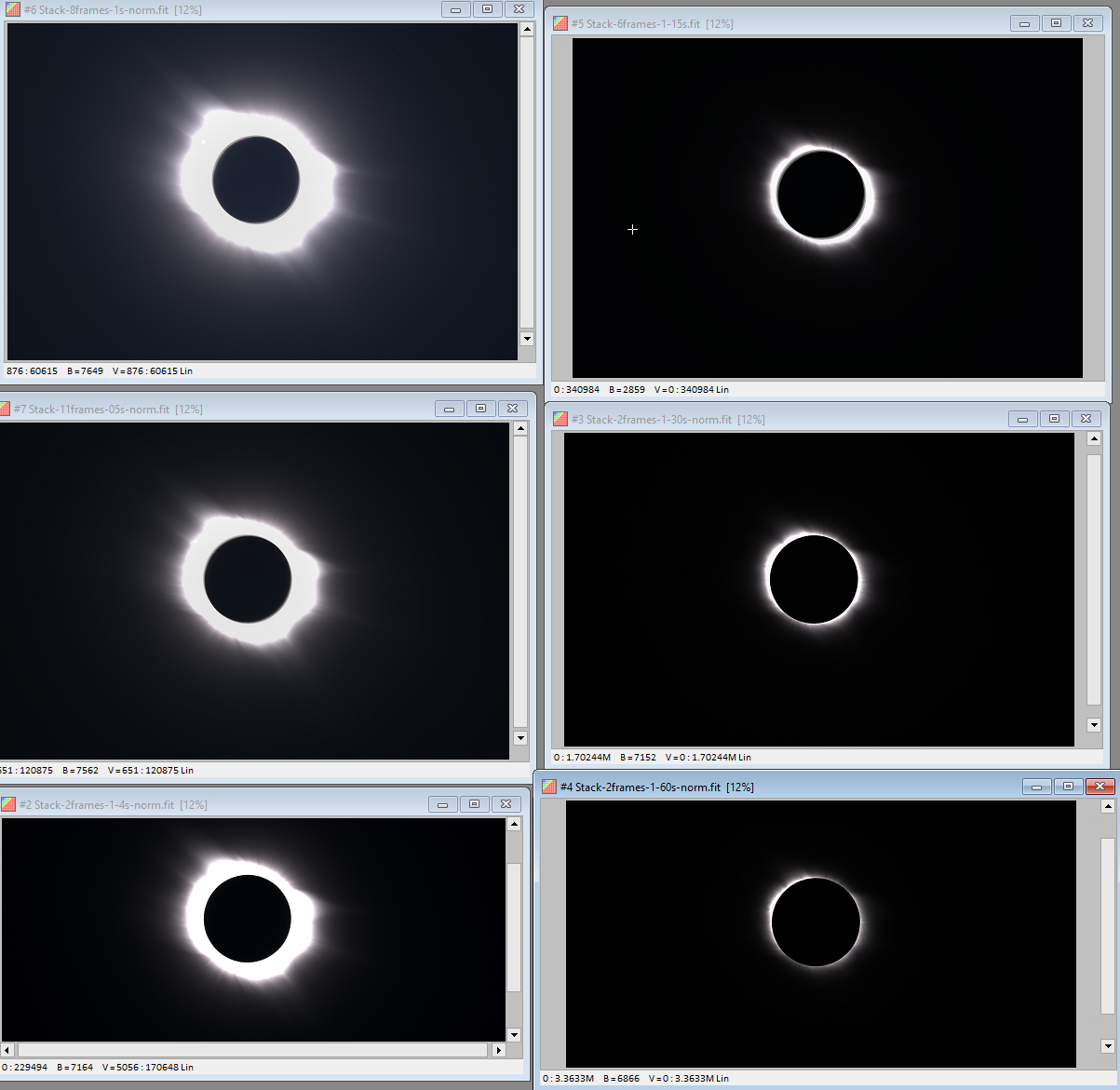
Note : because the images are calibrated (to 1s exposure), the range of ADU is very large :
- max ADU = about 60 k for 1 s exposure (top left image),
- max ADU = about 3.3 E6 for 1/60 s exposure (bottom right image)
Fit files are 32 bits int RGB files.
Step 3 : stacking the different exposure times
- only a limited area of each image is properly exposed : the inner part is saturated, the outer part is underexposed,
- accordingly only the properly exposed areas should to be taken into account in the stack (see Druckmuller paper).
Example of a stack based on the properly exposed area.
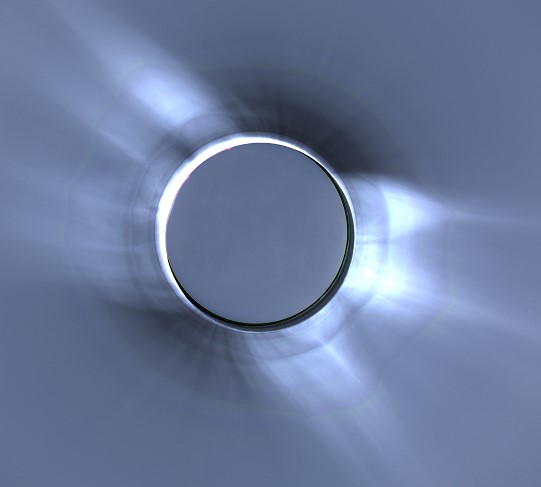
The image was divided by a radial masq for better visualisation. The S/N is optimal in each of the properly exposed area.
The obvious issue is the frontiers between these areas.
Step 3 : comparison between Jonathan image (Christian2006TSE_Gaussian) and "crude stack" (Preprocessing03-avec-clamp) :
a- Linear visualisation of the whole dynamic range.
The calibration is lost in Jonathan stack. Some dynamic compression has
already been applied. It would be preferable to have a linear stack at
this stage (ie. no dynamic compression).
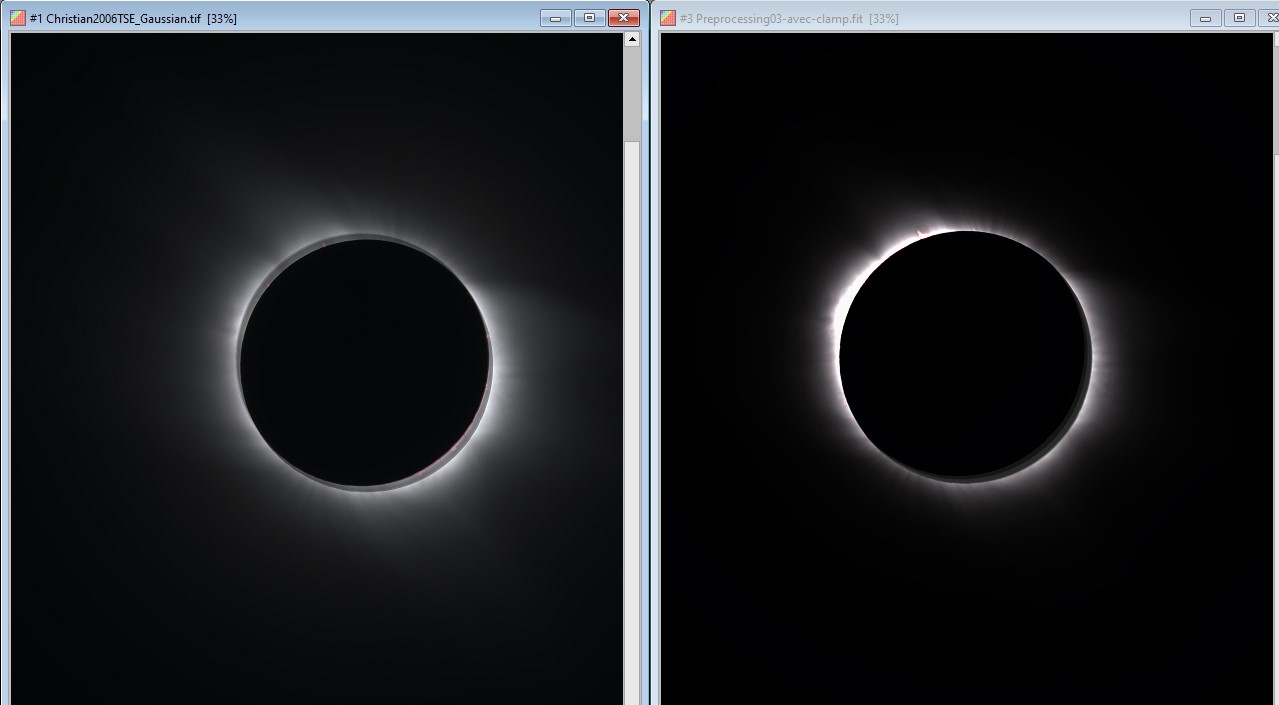
b- Linear visualisation : comparison of background noise, star detection
The set of input images used in the left stack is probably not the right one.
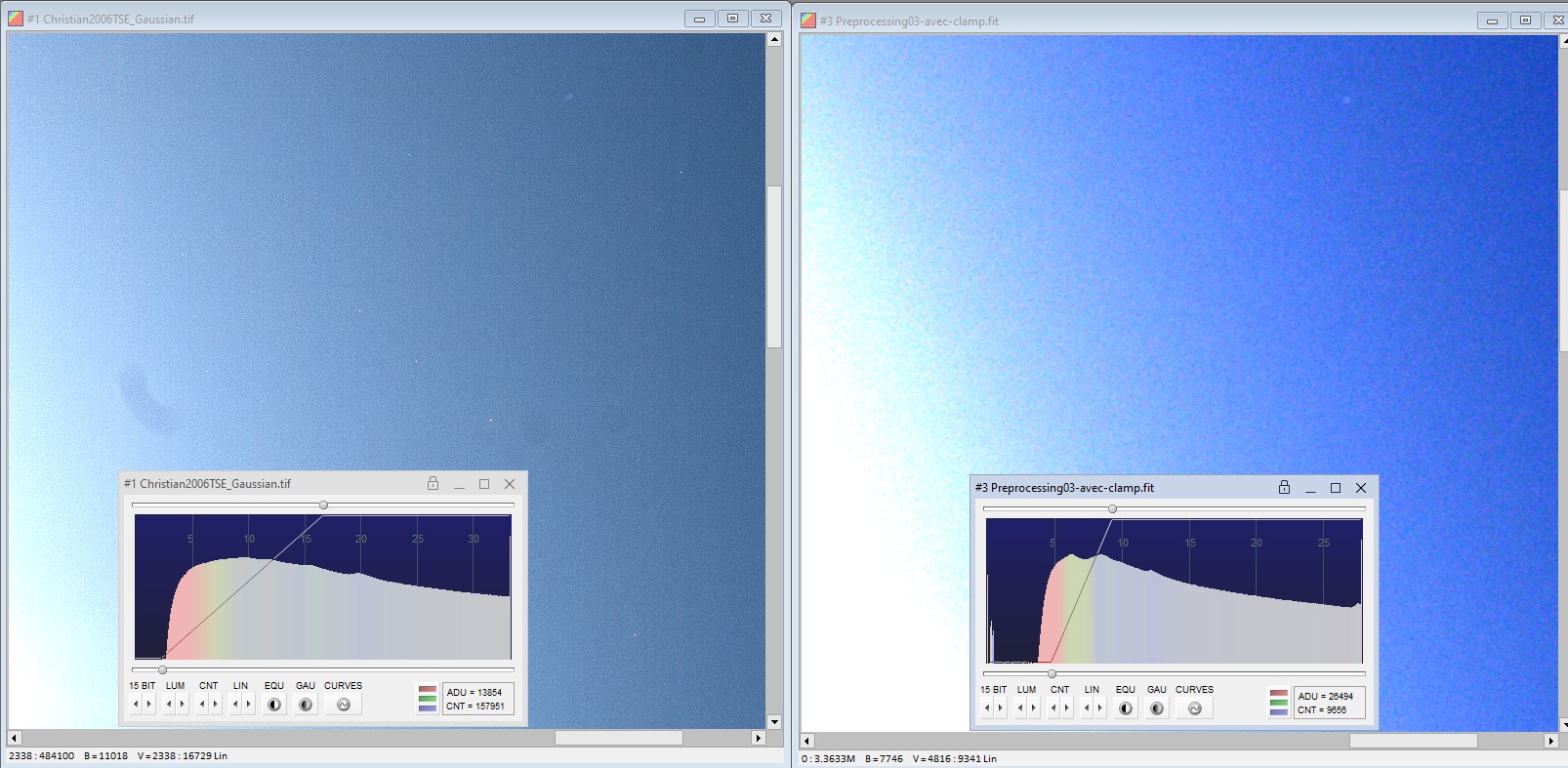
c- Frontier management between different exposure times (images processed with radial mask for visualization):
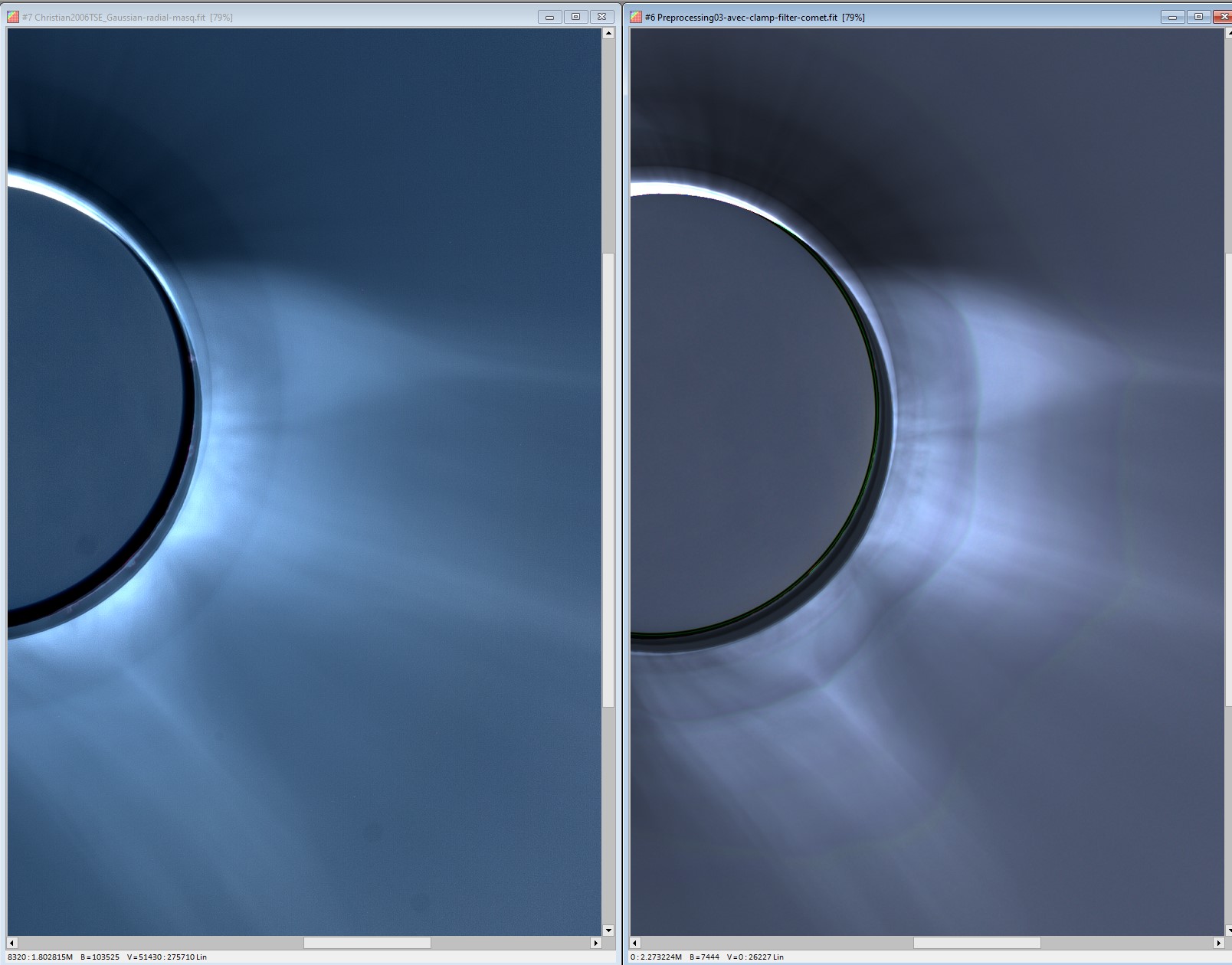
Management between arears of different exposure is much better in
Jonathan version. Only the frontier between the 1/4 and 1/15s (=2 EV)
is visible.
Details of the inner corona very close to the solar limb are lost
in the left image. Maybe because of the set of images used ?






